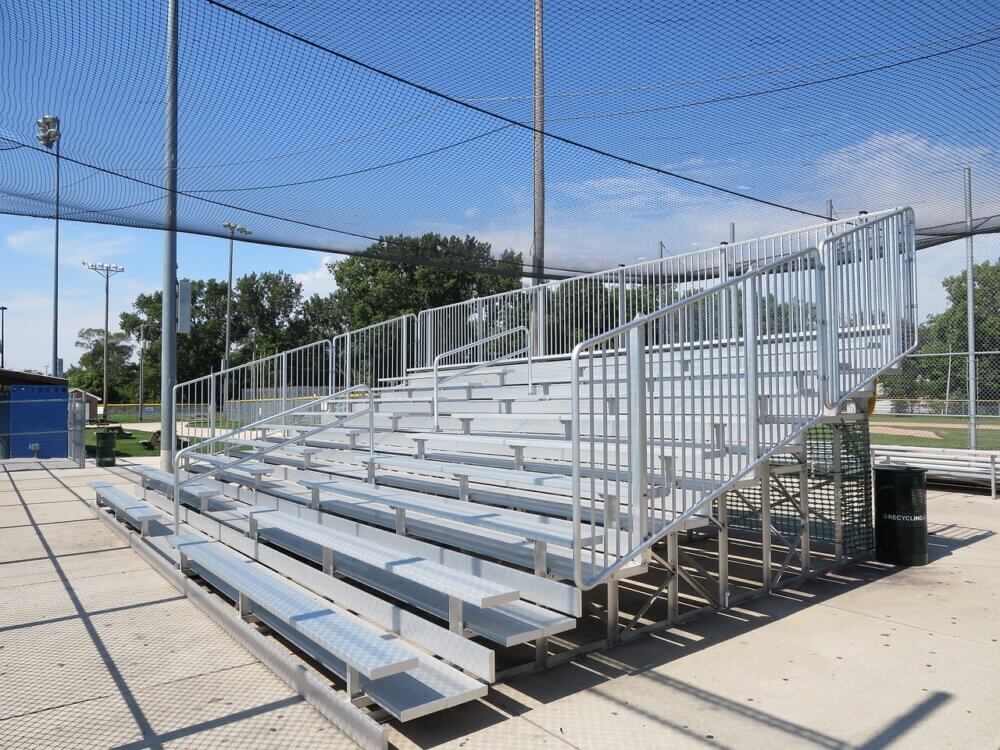While they may be overshadowed in stature by the stadiums of which they are part, stands can represent iconic and boldly designed structures in their own right. From Kops to Kippaxes, they often leave their own legacy and architectural heritage.
But, while you may know what stands are, have you ever stopped to think about why stands are called stands? After all, most spectators at modern sporting and concert venues are sitting down when they watch the event at hand.
In this blog, we’ll take a closer look at the roots of the word ‘stand’ and explore why it is that such seemingly peculiar terminology is used in modern sporting venues. We’ll also look at why stands can also be named as bleachers.
But, before we dig deeper, let’s summarise the answer to the question why are stands called stands:
The reason stands are called ‘stands’ is simply that the term refers to a tiered structure upon which spectators can stand. The word was first used when spectator areas were only made for standing, and although seating at stadiums and other venues has become more common, ‘stand’ has continued to be employed.
While this definition is pretty straightforward, there are other reasons why the first stands were named as such, and it’s an interesting tale!

What is the definition of the word ‘stand’?
According to the Merriam-Webster Dictionary, a ‘stand’ is defined as ‘rows of seats in a stadium that people sit in when they are watching a sports event, concert’. However, this brief explanation doesn’t tell the whole story.
In their earliest forms, stands referred to terraces that did not have any seats. Indeed, some of the first instances of the word ‘stand’ were apparent in baseball, where spectators would stand on raised bits of ground near the outfield.
So, in essence you may argue that the word ‘stand’ can equally be defined as where the seats are stood, rather than the row of seats themselves. Naturally, this applies to the area where people are standing as well.
This makes sense if you consider other areas where the word ‘stand’ is used. For example, musical performances are often held on a bandstand, you put a television on a TV stand, and you can get taxis from a taxi stand.
Where does the word ‘stand’ come from?
To understand where the word ‘stand’ comes from, we must look at the origins of the word from an etymological sense. Essentially, the word in its modern definition stems from a mixture of old English and old German, but it also has more modern roots as an abbreviation for the word ‘grandstand’.
In old English, the word ‘stand’ meant a pause, delay, or state of rest – whereas, in 14th century Germany, the term signified an army reaching its position on the field. It was only in the early 15th century that the word ‘stand’ was first associated with spectators, when it began meaning a raised platform for hunters or spectators at outdoor events.
Moving forward to modern architectural terminology, we now define stands as being a tiered structure that houses spectators. For this, we may attribute the use of the word ‘stand’ to the word ‘grandstand’, which implied a ‘grand’ structure – unlike the first ‘stands’ in baseball.
In other words, it is a combination of its original form as a place for hunters and spectators to get a better view of the action, and the modern implication of a stand being ‘grand’ in nature, that has given the word ‘stand’ the meaning it has today.

Why are stands called ‘bleachers’?
While the word ‘stand’ itself has an interesting backstory, stands may also be referred to as bleachers, which perhaps need even more explanation. This label is mainly given in American, rather than European, sports.
The reason stands are called ‘bleachers’ here is because the tiered wooden terracing, which is often employed in American sports venues, is easily bleached in the sun. Ever since its first usage in baseball in the late 1880s, the name caught on quickly!
That’s all for our handy guide to why stands in sports or concert venues are called stands. It might give you something to think about the next time you’re on your way to the ball game!
If you’d like to know more about why building terms are named the way they are, check out our guide to why buildings are called buildings despite already being built, and why an airport is called an airport.
You may also like to know why stadiums are named after brands.
If you would like to check out wider definitions and vocabulary explanations from the construction and architecture world, why not explore our selection of Building Wikis?
Last Updated on 8 February 2023 by Michael

